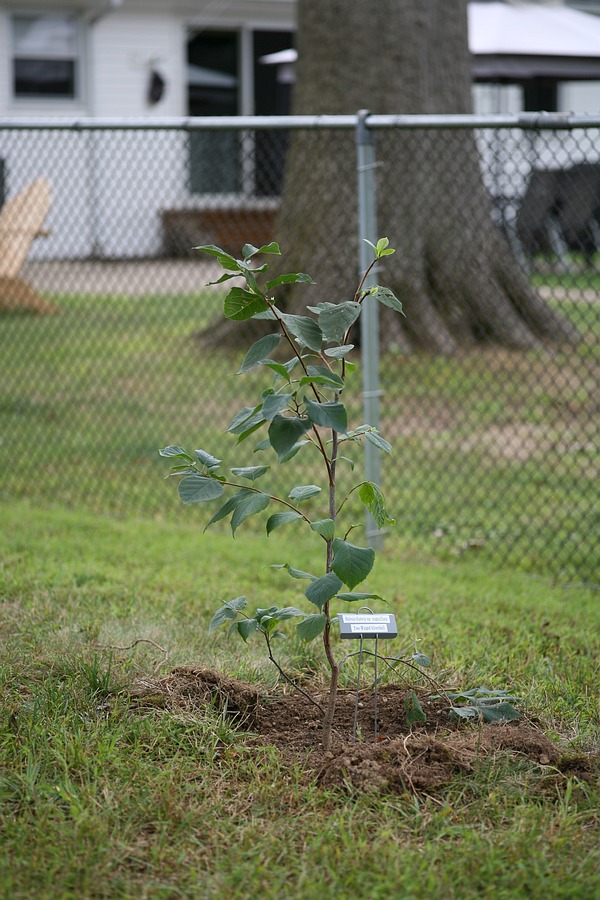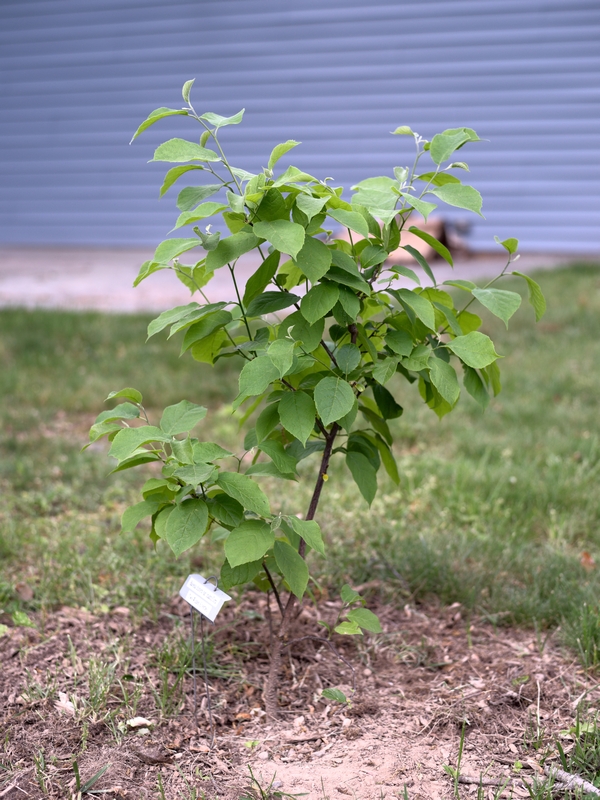


Source: Mail Order Natives (FL)
Size shipped: #1 pot, minus the pot (and any excess soil)
Planted:
First flowering: None yet
(This plant stayed behind when I moved in 2021; therefore, the following text will receive no further updates.)
Plan: grow in root-pruning containers until superior root branching is evident, then plant out (as silverbells are reportedly difficult to transplant, so the sooner it's planted, the better) under the canopy of the mature shade trees. Despite having this one shipped in the beginning of March, it still wasn't early enough to get this tree while it was still dormant; such is the nature of shipping live plants from Florida to New Jersey. But I couldn't find anyone else selling it, so I'll have to live with it. (I have found a few that sell Halesia tetraptera or cultivars thereof, but that tree is too big for the planting spot I have intended for this one.) Thankfully, we didn't get any more meaningful freezes for the rest of the spring.
A month to the day after potting this plant, I noticed some yellowing of leaves, so I threw some Joyful Dirt at it in case the Osmocote Plus wasn't providing enough nitrogen. That didn't fix the problem, so my next move was to topdress with Espoma Iron-tone... but I think I may have used too much, as I started seeing some crispy leaf margins in the next few days -- this must be that "fertilizer burn" phenomenon I always hear about. Thankfully, judicious amounts of water seemed to prevent the burn from getting any worse, and 2-3 weeks later the Iron-tone appeared to have done its job, as the yellowing was looking much sparser. Unless that was just cold-induced chlorosis, brought on by the sudden move from Florida to New Jersey in March...
University of Florida says the silverbell is typically multi-trunked, and that is being borne out in full by what I'm seeing with this one. Apparent heading back of the trunk at the nursery caused a number of shoots to grow out up top, but not a single one seems to want to take over as the leader -- they're all growing out at angles rather than straight up. In mid-June I selected one to stake flush with the lower trunk and headed back the others to prevent competition; it worked decently but not great, and I'll need to do further subordinating heading cuts on the side branches in the dormant season.
Late August saw the silverbell lose a number of its leaves overnight to what looked like deer browsing, though it wasn't as bad as what happened to the Olympic Fire mountain laurel. At least none of my sources are trying to claim that Halesia is generally avoided by deer.
On Labor Day 2020, the silverbell was finally planted out in the yard. The RootBuilder II appeared to have done its job well, and the soil looked like decent loam, so I'm not anticipating any major problems. I mixed blood meal into the hole to ensure a source of nitrogen before next spring and yet not immediately available (Espoma's blood meal is completely insoluble), because it was late enough in the growing season that I didn't really want to encourage any more new growth than the plant was already pushing to replace the deer browse losses (not enough time left before frost to amortize the cost of such new leaves -- better to keep the starch reserves in the roots and save it for next year).